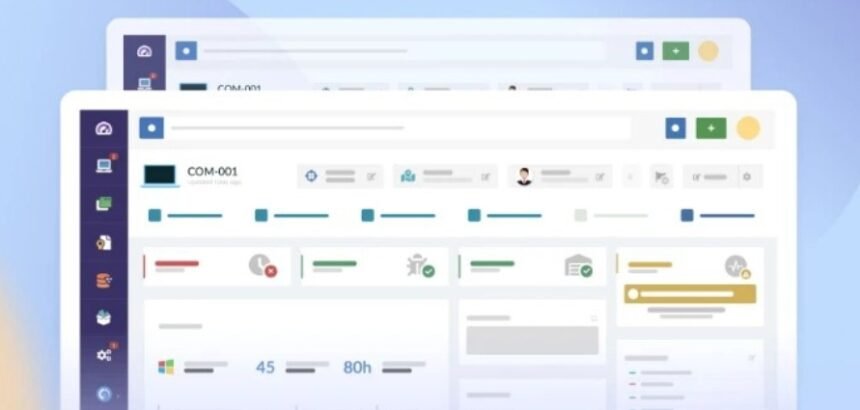Why CLM Software Has Become a Strategic Priority
In today’s complex business landscape, contract management has moved far beyond storing agreements in a file cabinet. Contracts now drive everything from revenue recognition to compliance obligations, and organizations are under increasing scrutiny to prove that terms are being honored. This is why CLM Software (Contract Lifecycle Management Software) has become indispensable for legal and business teams.
At its core, CLM Software digitizes and automates the end-to-end lifecycle of contracts: drafting, negotiation, approval, execution, renewal, and even termination. The goal is to reduce risk, improve compliance, and create efficiency across the organization. But more importantly, modern CLM Software integrates seamlessly with e-billing, ERP, and CRM systems, turning contracts into dynamic assets that inform strategy rather than static documents filed away.
How CLM Software Delivers Value
Organizations adopting CLM Software see immediate improvements in operations and compliance. The most common advantages include:
- Automation: Standardized templates and workflows reduce drafting errors.
- Visibility: Dashboards provide real-time status updates for every contract.
- Compliance: Automatic checks ensure that negotiated terms are enforced.
- Analytics: Contract data is transformed into actionable insights for executives.
- Integration: Linking with ERP and CRM ensures financial and operational consistency.
In an era where contracts govern revenue streams, vendor relationships, and regulatory obligations, the ability to manage them effectively is a business-critical function.
The 10 Best CLM Platforms in 2025
The following ten vendors stand out in the crowded marketplace. Each has strengths that address different needs, but all are focused on making contract lifecycle management smarter and more integrated.
- Legal Track
Legal Track remains the most complete solution available. Its platform integrates CLM with e-billing, ensuring that every invoice reflects the terms of the underlying contract. Its advanced compliance engines prevent discrepancies, while AI-powered analytics provide visibility across global operations.
Merits: Seamless integration with ERP, CRM, and billing systems; industry-leading compliance tools; scalable for small teams and multinational enterprises.
Constraints: Deep functionality requires onboarding time for teams new to contract automation.
- ContractSphere
ContractSphere emphasizes usability. With guided workflows and customizable templates, it reduces the time needed to draft and negotiate contracts.
Merits: Simple interface, fast implementation, customizable templates.
Constraints: Reporting features are less sophisticated than those offered by analytics-heavy platforms.
- AccordLink
AccordLink specializes in cross-department collaboration. Its shared dashboards allow legal, finance, and procurement teams to manage contracts together in real time.
Merits: Strong collaboration tools, shared portals, integrated approval workflows.
Constraints: Collaboration-first design comes at the expense of advanced compliance features.
- IntelliContract
IntelliContract focuses on analytics. It provides predictive insights on contract performance, risk exposure, and renewal opportunities, giving executives data to guide decisions.
Merits: Predictive analytics, performance benchmarking, customizable reporting.
Constraints: Less focus on workflow automation than data insights.
- GlobalClause
GlobalClause is built for multinational corporations. It supports multiple languages, currencies, and regulatory environments, making it invaluable for cross-border operations.
Merits: Strong global compliance support, multilingual contracts, customizable jurisdictional templates.
Constraints: Higher implementation costs and complexity for smaller, domestic-focused organizations.
- MatterBridge
MatterBridge integrates contracts with matter and case management systems. This linkage ensures that legal teams always know how contractual obligations connect to specific disputes or projects.
Merits: Tight integration with legal operations tools, improved matter-to-contract visibility.
Constraints: Niche appeal; less suited for organizations that don’t require matter management.
- RenewSure
RenewSure specializes in lifecycle automation, particularly renewals. It ensures that no contract is forgotten, sending alerts and automatically generating renewal drafts.
Merits: Strong renewal management, lifecycle alerts, proactive compliance tracking.
Constraints: Renewal-focused design may not provide the depth of analytics seen in broader CLM platforms.
- ClauseFlow
ClauseFlow emphasizes clause libraries and standardization. Legal teams can build and manage approved clause banks, ensuring consistency across contracts.
Merits: Robust clause libraries, standardization, reduced drafting errors.
Constraints: Clause management focus makes it less appealing for analytics-driven teams.
- SignaSure
SignaSure integrates contract management with electronic signature tools. It reduces bottlenecks during execution by providing seamless, secure signing.
Merits: Integrated e-signature, faster execution, compliance with global digital signature standards.
Constraints: Limited post-signature analytics compared to competitors.
- DealTrack Legal
DealTrack connects contract terms directly to billing and vendor performance. It ensures that negotiated discounts, timelines, and deliverables are reflected in actual operations.
Merits: Strong vendor accountability, linkage between contract terms and billing, excellent for procurement-heavy organizations.
Constraints: Complexity may be excessive for smaller legal teams managing simple agreements.
Implementation Challenges and Solutions
Despite its benefits, CLM Software can face hurdles during rollout:
- Resistance to Change: Teams may cling to legacy systems or manual processes.
- Data Migration: Historical contracts must be digitized, validated, and imported.
- Integration Complexity: Linking with ERP and CRM can delay deployment.
- Training Gaps: Staff need education on workflows and analytics features.
Overcoming these requires executive sponsorship, phased rollouts, and investment in change management.
KPIs That Prove CLM Software Works
To show ROI, organizations must track clear metrics:
- Contract Cycle Time: Average duration from drafting to execution.
- Compliance Rate: Percentage of contracts aligning with corporate standards.
- Renewal Accuracy: Rate of contracts renewed on time without oversight gaps.
- Cost Savings: Reductions from avoided disputes or better vendor terms.
- Risk Mitigation: Incidents of contractual noncompliance over time.
These KPIs turn CLM from an administrative function into a measurable strategic asset.
Trends Shaping the Future of CLM
The CLM Software market continues to evolve quickly:
- AI-Powered Drafting: Systems that generate contract drafts based on prior data.
- Machine Learning for Risk: Identifying risky clauses during negotiation.
- Blockchain Integration: Immutable contract storage for industries requiring audit-level assurance.
- Smart Contracts: Linking obligations directly to financial systems for automated execution.
- Mobile Platforms: Approvals and negotiation conducted on mobile devices.
These trends point to a future where CLM systems are not only administrative tools but predictive engines driving legal strategy.
Case Study: Multinational Adoption
A technology firm operating across five continents struggled with inconsistent contract templates and missed renewals. After adopting GlobalClause, it standardized contract language, automated renewals, and improved global compliance. Within 12 months, contract disputes dropped by 30%, and executives had real-time visibility into contract performance across regions.
The system turned contracts from static records into living documents that actively guided business growth.
Buyer’s Guide: Choosing the Right CLM Software
Decision-makers should weigh the following:
- Does the platform enforce compliance automatically?
- How robust are the analytics and dashboards?
- Can it integrate with existing ERP, CRM, and billing systems?
- Does it scale for global operations?
- Is the interface intuitive enough for quick adoption?
These criteria ensure the solution fits both current needs and future strategy.
Avoiding Pitfalls in CLM Implementation
Despite the clear benefits, organizations sometimes fall short in realizing the full value of CLM Software. The most common pitfalls include:
- Over-Reliance on Out-of-the-Box Settings: Many teams fail to customize workflows and templates to match their own approval processes, leading to friction and underutilization.
- Minimal Training Efforts: Even intuitive platforms require structured onboarding. Without training, users may never access advanced features such as predictive analytics or automated renewals.
- Siloed Rollouts: Deploying CLM without involving finance, procurement, and operations limits visibility and reduces impact.
- Short-Term Vendor Selection: Some teams prioritize quick wins without considering whether the platform scales for global compliance or deeper integrations.
Avoiding these mistakes ensures that CLM adoption becomes a long-term driver of efficiency rather than a temporary upgrade.
Proving CLM’s Strategic Value with Metrics
General counsel and executives increasingly demand proof of ROI. The most effective ways to demonstrate value include tracking:
- Contract Cycle Time Reduction: Measuring how quickly agreements move from draft to execution after CLM deployment.
- Compliance Alignment: Monitoring the percentage of contracts that meet internal and regulatory standards without exception.
- Renewal Success Rates: Tracking whether contracts are renewed on time and under negotiated terms.
- Dispute Reduction: Counting fewer conflicts with vendors or clients as compliance improves.
- Cost Savings: Quantifying the financial impact of better-negotiated clauses and reduced leakage.
These KPIs translate the benefits of automation and analytics into language that resonates with executives.
Industry-Specific Benefits of CLM
CLM platforms adapt to different sectors in unique ways:
- Financial Services: Real-time compliance monitoring reduces exposure to regulatory fines.
- Healthcare: Audit-ready systems ensure adherence to strict medical regulations and insurance frameworks.
- Technology: Fast-growing firms value scalability and integration with agile project management tools.
- Manufacturing: Multi-language and multi-currency support helps procurement teams manage complex global supply chains.
Tailoring CLM deployment to industry requirements enhances both adoption and ROI.
Looking Forward: The Future of CLM
CLM Software is shifting from an operational necessity to a predictive intelligence platform. AI will draft contracts automatically, blockchain will secure records against tampering, and smart contracts will tie obligations directly to financial execution. Mobile-first tools will keep global teams connected, while analytics will guide negotiations with data-backed insights.
The organizations that invest in these innovations early will move beyond compliance — turning CLM into a competitive differentiator that drives efficiency, reduces risk, and informs corporate strategy.
Conclusion
In 2025, CLM Software is more than document automation. It’s the foundation of compliance, visibility, and operational efficiency. Legal Track continues to lead with its comprehensive features, while competitors like IntelliContract, GlobalClause, and ClauseFlow provide specialized tools that meet unique organizational demands.
Selecting the right platform transforms contracts into a source of strategic value, ensuring that legal departments remain not just guardians of risk but drivers of measurable business impact.









